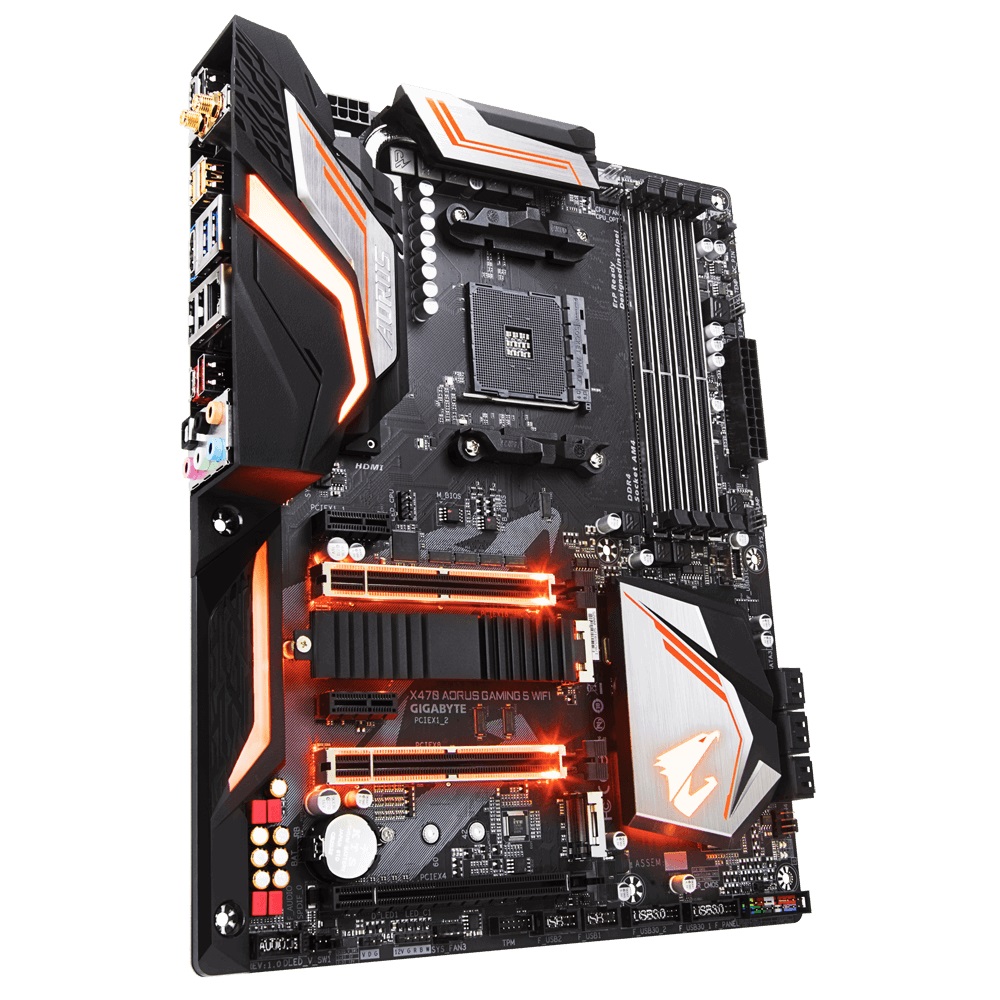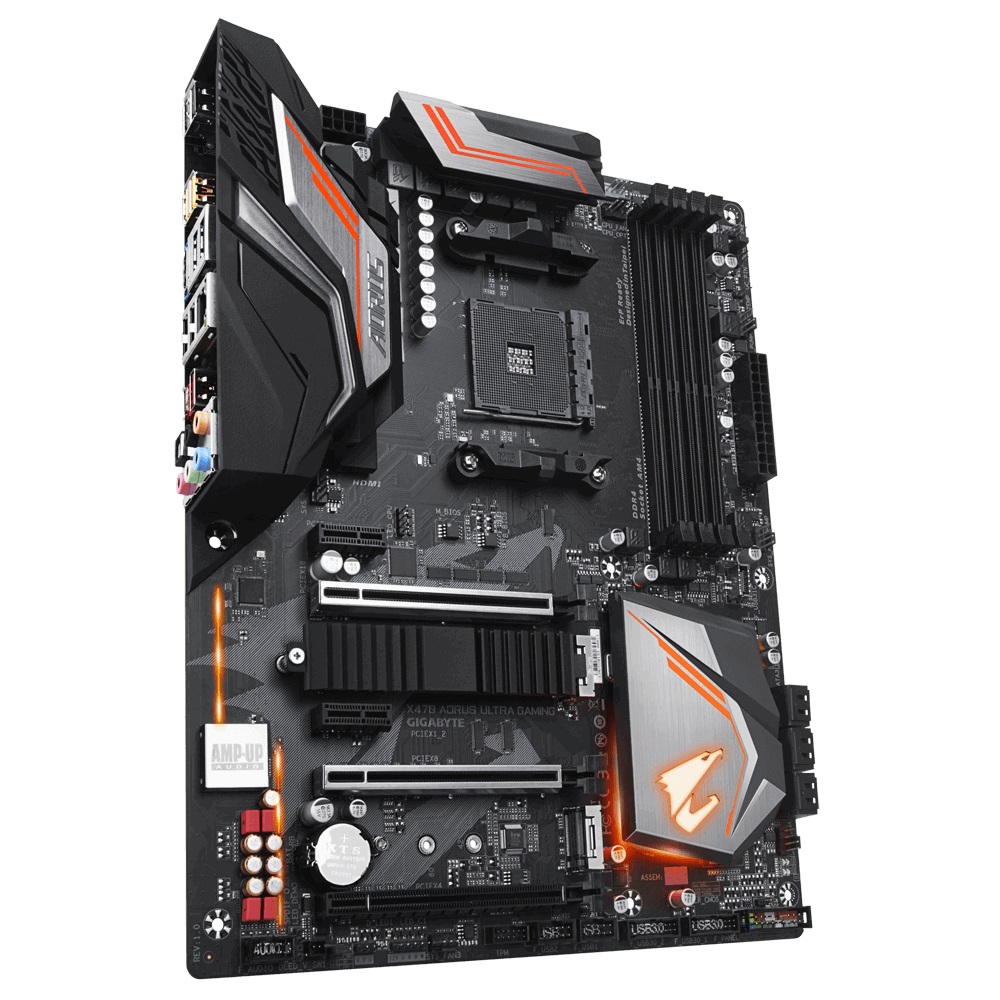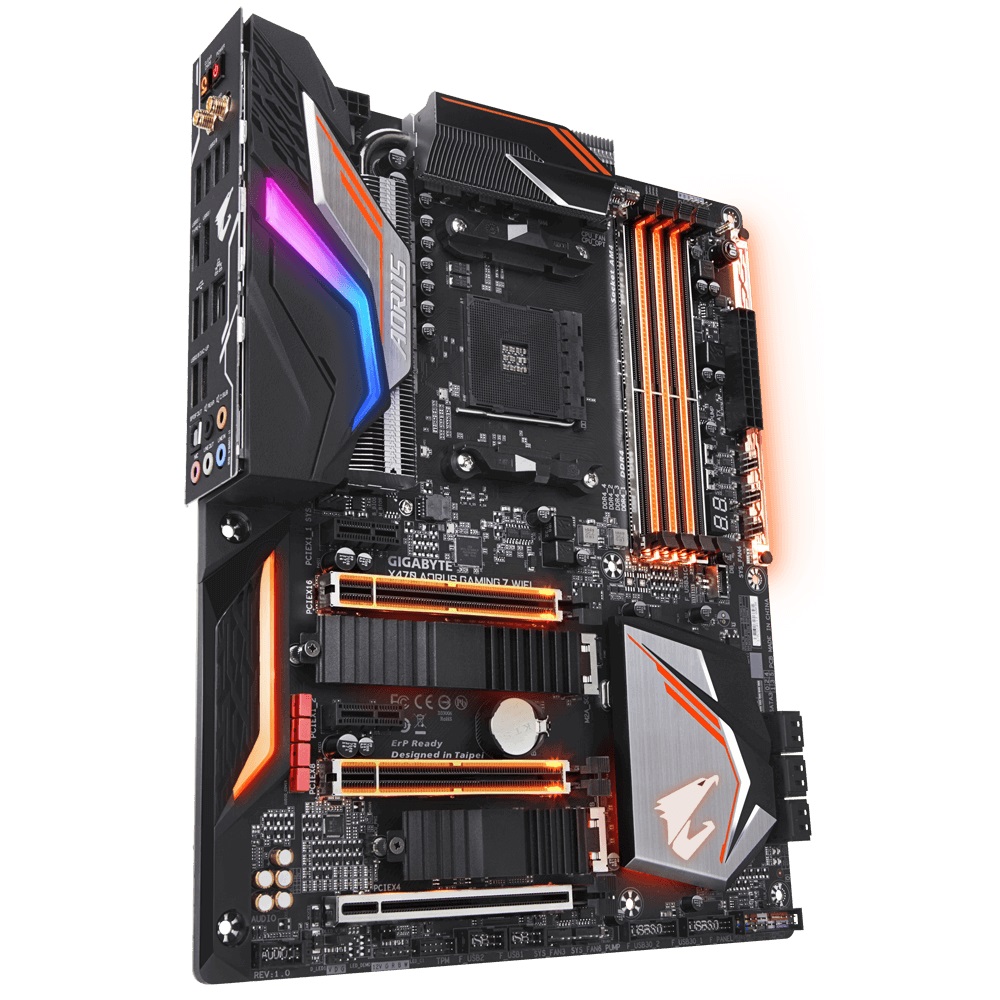Gigabyte Launches Three High-End X470 Motherboards



Gigabyte’s X470 salvo consists of only high-end and enthusiast Aorus motherboards. There are three in total: the Gaming 7, the Gaming 5, and the Ultra Gaming. All three boards have dual M.2 slots, Gigabyte’s most advanced RGB lighting, and premium onboard audio.
X470 Aorus Gaming 7
Starting with the flagship, the X470 Aorus Gaming 7 comes absolutely loaded with RGB. Beyond the usual heatsink, I/O cover, and back-glow lighting accents, the Gaming 7 has RGB-lit DIMM slots and PCIe slots. Fortunately, all that bling is backed up with some pretty over-designed hardware. The Gaming 7’s power circuitry is cooled by one of the biggest motherboard heatsinks we’ve seen in a while. The extreme cooling extends to the M.2 slots, which are both on the front side of the board and are cooled by dedicated heatsinks. As if it just wanted to outdo its competition, Gigabyte used metal reinforcement on all of the Gaming 7’s PCIe x16 slots and even its RAM slots.
As expected, Gigabyte didn’t hold back on the value-add features, either. The Gaming 7 has integrated wireless like some other X470 motherboards, but it uses Intel’s new 1.73Gb/s-capable wireless solution that launched with the Coffee Lake mainstream chipsets. On the audio front, Gigabyte, like Asus, uses a dedicated ESS Technologies DAC chip and a dedicated headphone amplifier for improved sound.
X470 Aorus Gaming 5 and Ultra Gaming
Slightly down the line from the Gaming 7 are the Gaming 5 and Ultra Gaming. In terms of features, both of these are closely related, mainly separated by some bling factor. For starters, they both use the same power circuitry that is a step below the Gaming 7’s. The Gaming 5 loses the RGB-lit RAM slots but keeps the lit PCIe slots, whereas the Ultra Gaming has neither. Both boards lose the dedicated heatsink for the second M.2 slot, and the Ultra Gaming further lacks any integrated wireless solution. The Gaming 5’s integrated wireless is the same as the Gaming 7’s.
Features common to all of Gigabyte’s new X470 motherboards are the capability of full PCIe 3.0 x4 bandwidth on both M.2 slots, the inclusion of front and rear USB 3.1 Gen2 Type-A and Type-C ports, and the inclusion of two of Gigabyte’s voltage-stable USB 3.0 ports for long cable runs. All of the motherboards also fully support the Gigabyte RGB Fusion lighting ecosystem, which can use digital and static RGB LEDs. However, Gigabyte’s ecosystem uses different RGB headers from Asus, MSI, and Asrock.
Gigabyte didn’t announce pricing and availability of its new X470 motherboards.
Get Tom's Hardware's best news and in-depth reviews, straight to your inbox.